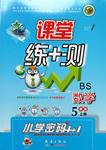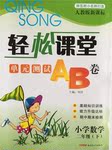题目内容
—It’ll take me about two hours to do the work!
—Oh, ! I could do it in half an hour.
A.come on B.no way
C.no problem D.don’t mention it
A
【解析】考查口语中习语的辨析。come on (表示鼓励)来吧!干吧!加油,快点。no way 没门。no problem 没问题。don’t mention it不要再提了。句意:上文:这将会花我两个小时的时间去做这份工作。下文:on,快点!我半个小时就可以做完。故选A。
make room for给…让地方。make fun of嘲弄, 取笑; 开玩笑。make sense of弄清楚…的意思。make use of利用…。句意:我们应该照顾盲人,取笑他们是不道德的。故选B。
考点:考查口语中习语的辨析

练习册系列答案
 课堂练加测系列答案
课堂练加测系列答案 轻松课堂单元测试AB卷系列答案
轻松课堂单元测试AB卷系列答案
相关题目